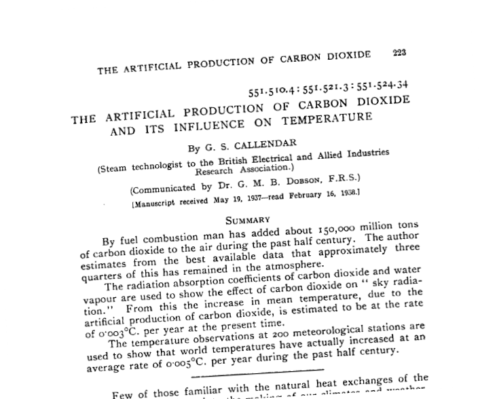In the 1930s,  an English steam engineer and inventor by the name of Guy Stewart Callendar had got wind of the possible manifestation of a physical phenomenon first mentioned a century earlier by French mathematician and physicist Jean-Baptiste Joseph Fourier, global warming. Fourier and others after him including John Tyndall (who demonstrated the effect) and Svante Arrhenius (who quantified it) showed that certain gases, particularly water vapour and carbon dioxide, have a particular absorption pattern for heat – they are greenhouse gases, as we know them today – and could affect the way in which our planet absorbs and reflects energy from the sun.

An increase in atmospheric carbon dioxide levels would, said Callendar in his 1938 paper, lead to an increase in the planet’s surface temperature. His calculations suggested a 0.003 degrees Celsius rise each year for the previous 50 years, but actual observations from 200 weather stations suggested that rise had in fact been higher, 0.005. Global warming was real, although not given that name until much later.
At the time, Callendar hoped that global warming, the Callendar effect would keep us warm when the next natural ice age emerged! Oh, the irony. From that time onwards, the coming ice age was our biggest natural threat until at least the late 1960s, soon after Callendar’s death, in fact. Today, Callendar’s calculations have held up and then some, global warming and its impact on climate are our biggest worries, with no sign of a new ice age. Indeed, we are still in the previous ice age so there may well be a natural as well as an anthropogenic warming to come.
You can read Callendar’s complete paper as a PDF here. Interestingly, the paper includes the dialogue between Callendar and his peers. I assume such inline peer review was standard practice back then and something science has lost since and is only just starting to reinvent through online discussion and post-publication peer review.